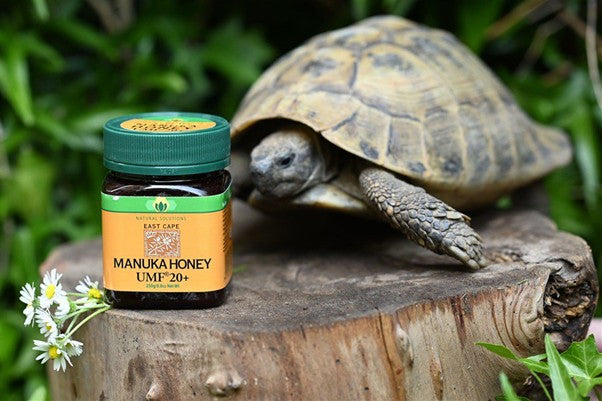
Turtles and beekeepers hold the same answer about the longevity formula: Part 1
Giant tortoises aren’t the only tortoises that live long.
Sea turtles can live 50 to 100 years, and box turtles can live more than a century.
In fact, scientists don’t know the upper limit of life for many turtle species simply because they don’t live long enough to figure it out themselves.
Talking about longevity formula!
WHY DO TURTLES LIVE SO LONG?
There’s an evolutionary and biological answer, says Lori Neuman-Lee, an assistant professor of physiology at Arkansas State University who studies turtles and other reptiles.
The evolutionary answer is relatively simple: animals like snakes and raccoons like to eat turtle eggs. In order to pass on their genes, turtles must live long and reproduce often.
However, the biological mechanism behind turtle longevity holds the key.
One of the reasons for turtles’ longevity lies in their telomeres, structures consisting of non-coding strands of DNA that cap the ends of chromosomes.
Let’s go back a little and answer…what are telomeres?
Are so-called telomeres a key to turtles’ longevity formula?
Take a moment and imagine the plastic ends on the laces. They prevent laces from wearing out and thus contribute to the preservation of your footwear.
This is precisely how scientists describe telomeres – the ends of DNA and protein complexes at the ends of chromosomes that regulate cell aging by preserving genetic material.
However, telomeres also wear out over time. They shorten to a certain extent with each cell division until they become so short that they can no longer perform their function, aka death.
The cell then either stops growing or dies.
Telomeres cannot simply be acquired at every other corner.
The rate at which telomeres shorten can define the rate at which individual ages. So, scientists consider telomere length a reliable marker of biological aging.
Also, short telomeres are associated with a weaker immune system, chronic and degenerative diseases, such as Alzheimer’s disease, osteoporosis, and cancer, as well as death at a younger age, mainly due to heart or infectious diseases.
Therefore, you should take care of these key players in cell fate as much as possible.
What about turtles?
Neuman-Lee said that turtles show a lower telomere shortening rate than shorter-lived animals. This means they are more resistant to certain types of damage that can result from errors in DNA replication.
According to the research, giant tortoises and several other species of tortoises appear to be able to protect themselves from the long-term effects of cell damage.
They achieve this by rapidly killing damaged cells, using a process called apoptosis or programmed cell death. So turtles control telomere shortening, thus holding the longevity formula.
How do they do it? It looks like you could get that answer from beekeepers.
It appears that beekeepers know a thing or two about longevity formula.



Leave a comment